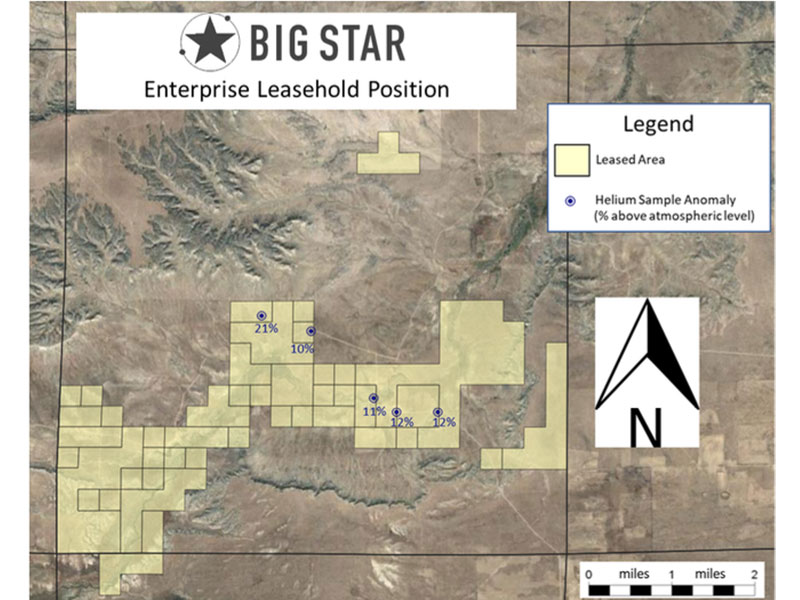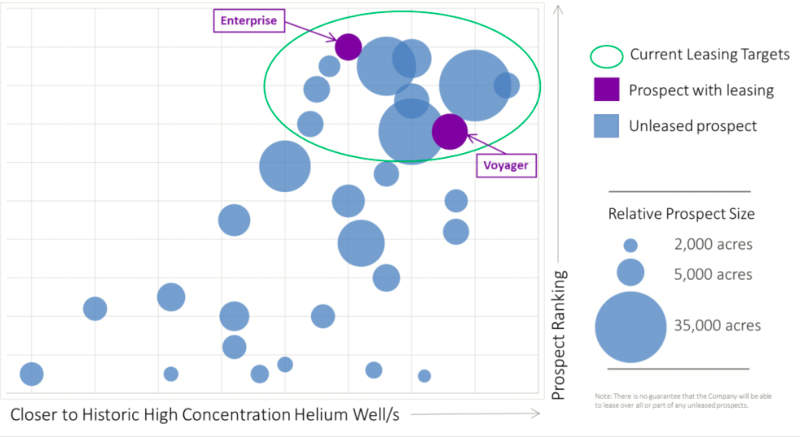Abundant, yet rare — this is why Big Star is focused on the helium prize

Picture: Getty
Special Report: As the gap between supply and demand widens, early mover Big Star Energy is well on its way to securing a substantial helium exploration landholding in the US.
Despite being the second most abundant element in the universe, helium is in short supply on the little rock we call Earth.
Indeed, most of the helium found on earth is produced when uranium and thorium decay in the Earth’s crust, and subsequently trapped in similar rock formations to those responsible for hydrocarbon accumulations.
There are significant curbs on helium production increases, as more than 95 per cent of all production comes as a by-product of natural gas production.
On the flip side, demand for helium is growing.
Helium is a critical component in modern technology applications; however, it sees the most use in MRI and nuclear medicine, both of which are becoming more widely used globally.
This has resulted in a widening supply and demand gap that has seen the price of helium rise over the past decade to over 100 times the price of natural gas in the US.
Big Star Energy (ASX:BNL) managing director Joanne Kendrick believes limited opportunities to increase helium supply from existing sources means the supply and demand gap will continue to widen into the future, giving the company the ability to leverage its growing helium acreage position.
“We think we are a relatively early mover into this commodity, which is explored for, developed and produced in almost exactly the same way as oil and gas,” she told Stockhead.
“It is very rare to find any subsurface deposits of gas that have greater than 0.5 per cent or more of helium.
“There are several such areas in the US, some of which produce up to 10 per cent helium and we are focusing on one of those areas.”
The company currently has about 5120 gross acres at the Enterprise prospect. Adding a second prospect, Big Star recently leased an additional 160 acres of prospective land at the new Voyager prospect in Colorado, which is one of the higher ranked prospects the company is targeting with its leasing program.

“Once we have the 25,000 gross acres (15,000 net acres) across five independent prospects in hand — and we are expecting to do that by early next year — we will go out and start permitting, which is getting all the necessary landholder and regulatory consent, for our five well program,” Kendrick added.
“It is a fairly low activity area for this sort of operation, so it is a bit uncertain how long that (permitting) could take, but probably something in the region of six to eight weeks.”
She said the planned wells would be relatively shallow and that “In several of the prospects that we have, there is potential for a secondary target which is a bit deeper than that.”

Big Star isn’t making plans on a hunch, either.
The area it has chosen produced helium in the past. The company has completed regional soil gas surveys that, over Enterprise, returned positive helium anomalies ranging between 10 per cent and 21 per cent above normal atmospheric levels, which is consistent with soil gas results over third-party producing helium projects in the US.
“There are some old exploration wells that we can use to develop our maps, we also have some geophysical data – aeromagnetic and gravity surveys that we have reprocessed,” Kendrick added.
>> Learn more about Big Star Energy
Read more:
Big Star is building a big helium lease position at Enterprise
Big Star cashed up to expand helium footprint
>> Now watch: 90 Seconds With… Joanne Kendrick, Big Star Energy
This story was developed in collaboration with Big Star Energy, a Stockhead advertiser at the time of publishing.
This story does not constitute financial product advice. You should consider obtaining independent advice before making any financial decisions.
UNLOCK INSIGHTS
Discover the untold stories of emerging ASX stocks.
Daily news and expert analysis, it's free to subscribe.
By proceeding, you confirm you understand that we handle personal information in accordance with our Privacy Policy.








